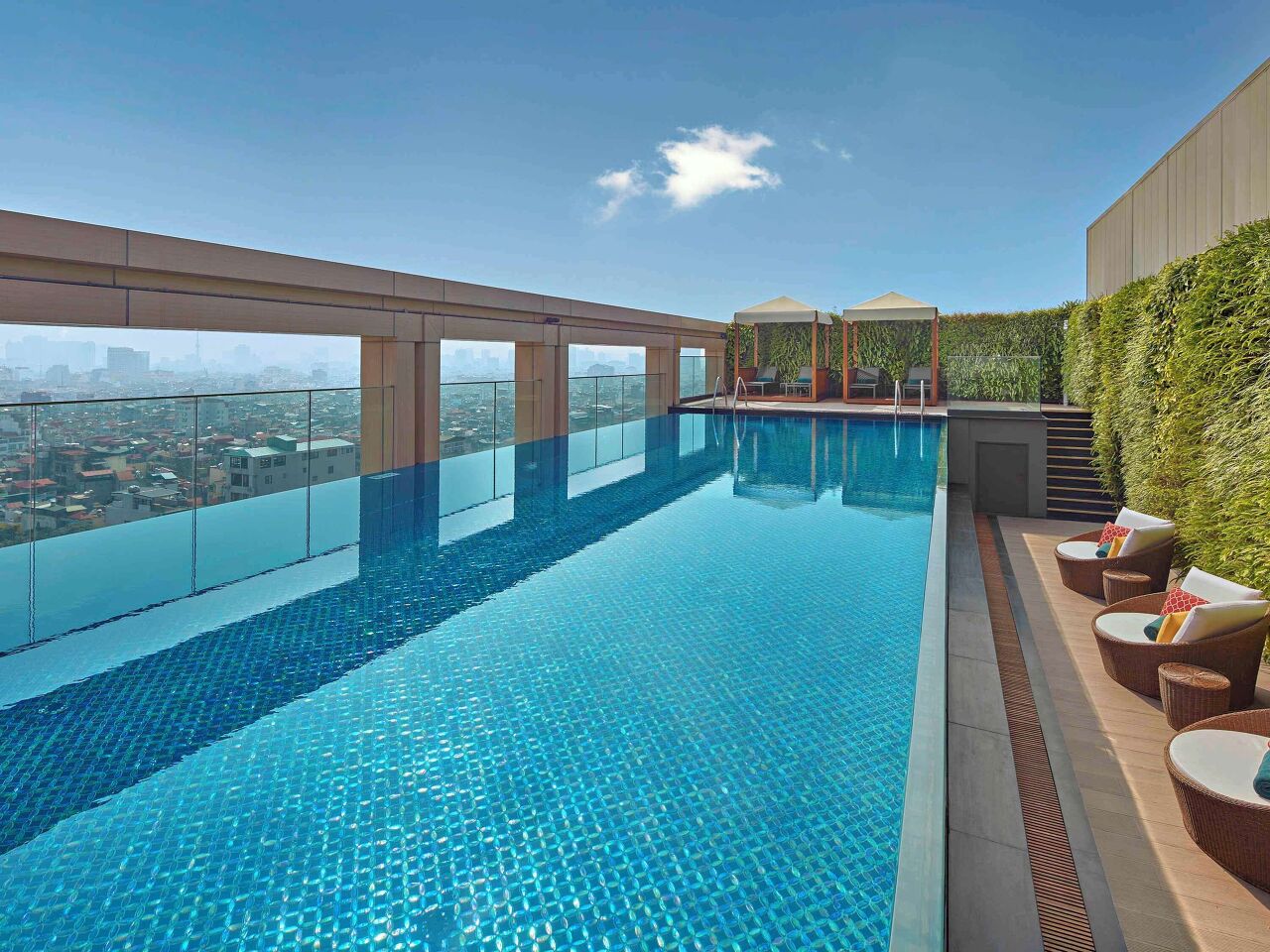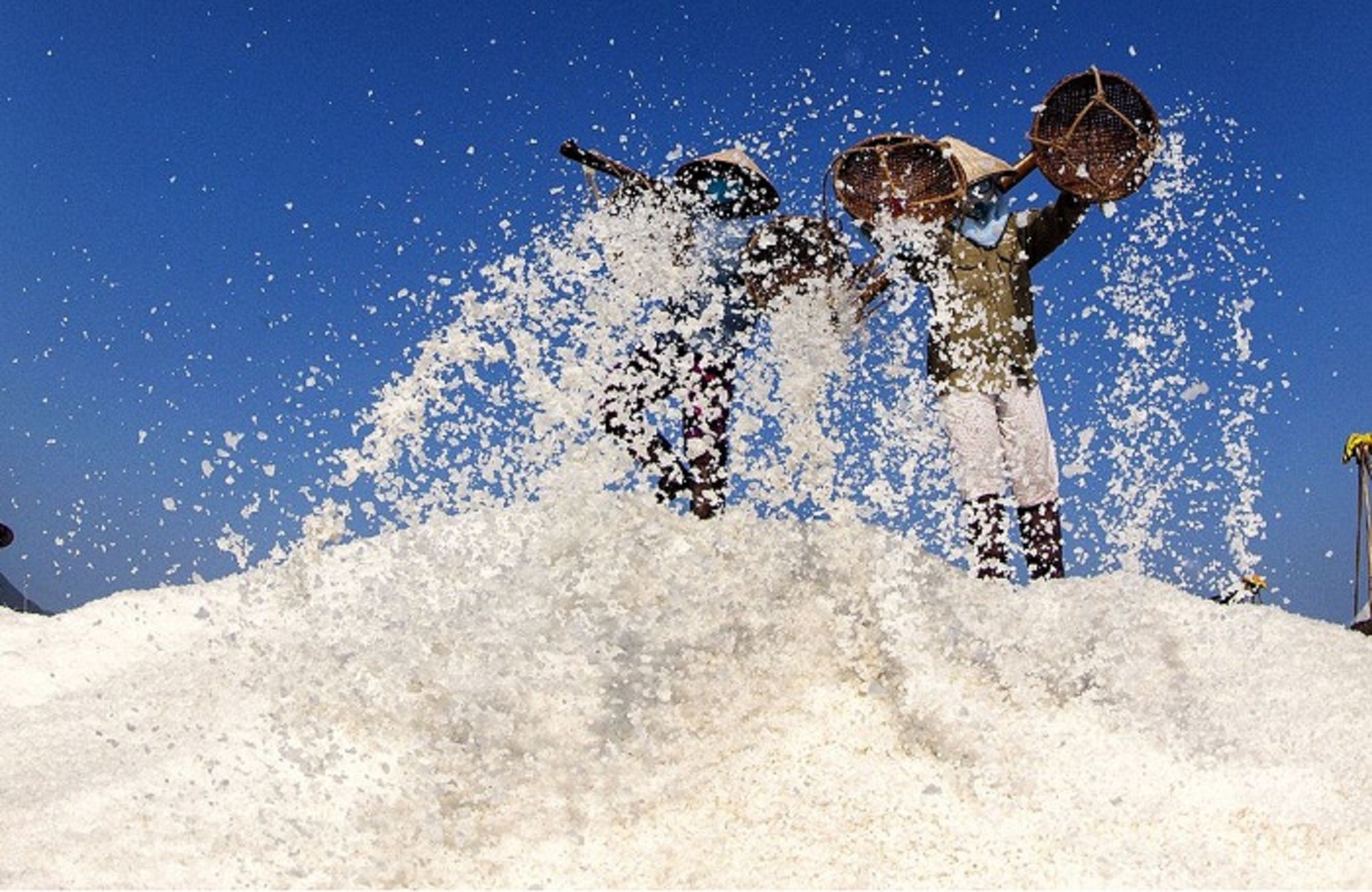5 Best Diving Sites in Vietnam
Culture
6 minutes
Mar 7, 2024
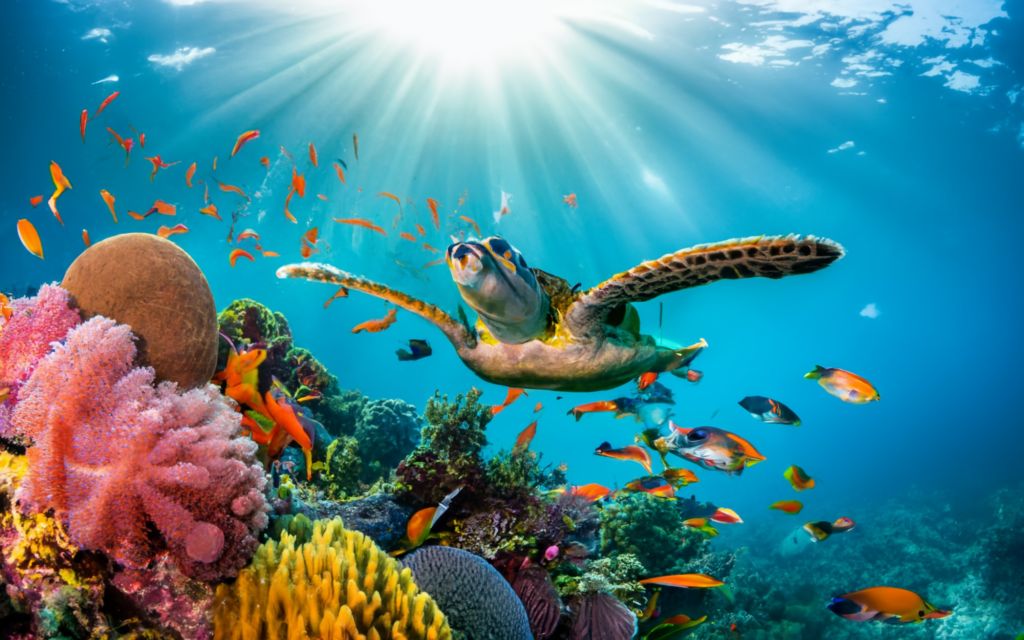
What many people don't know is that with a huge coastline longer than Thailand's at 3260km, Vietnam is an underwater paradise for diving enthusiasts and non-divers alike!
If you are already familiar with the beauty of Vietnam's diving sites, why not look beneath the waves and discover the underwater world? For the most part, Vietnam is not famous as a diving destination, but this adds an element of adventure to divers looking to explore something new.
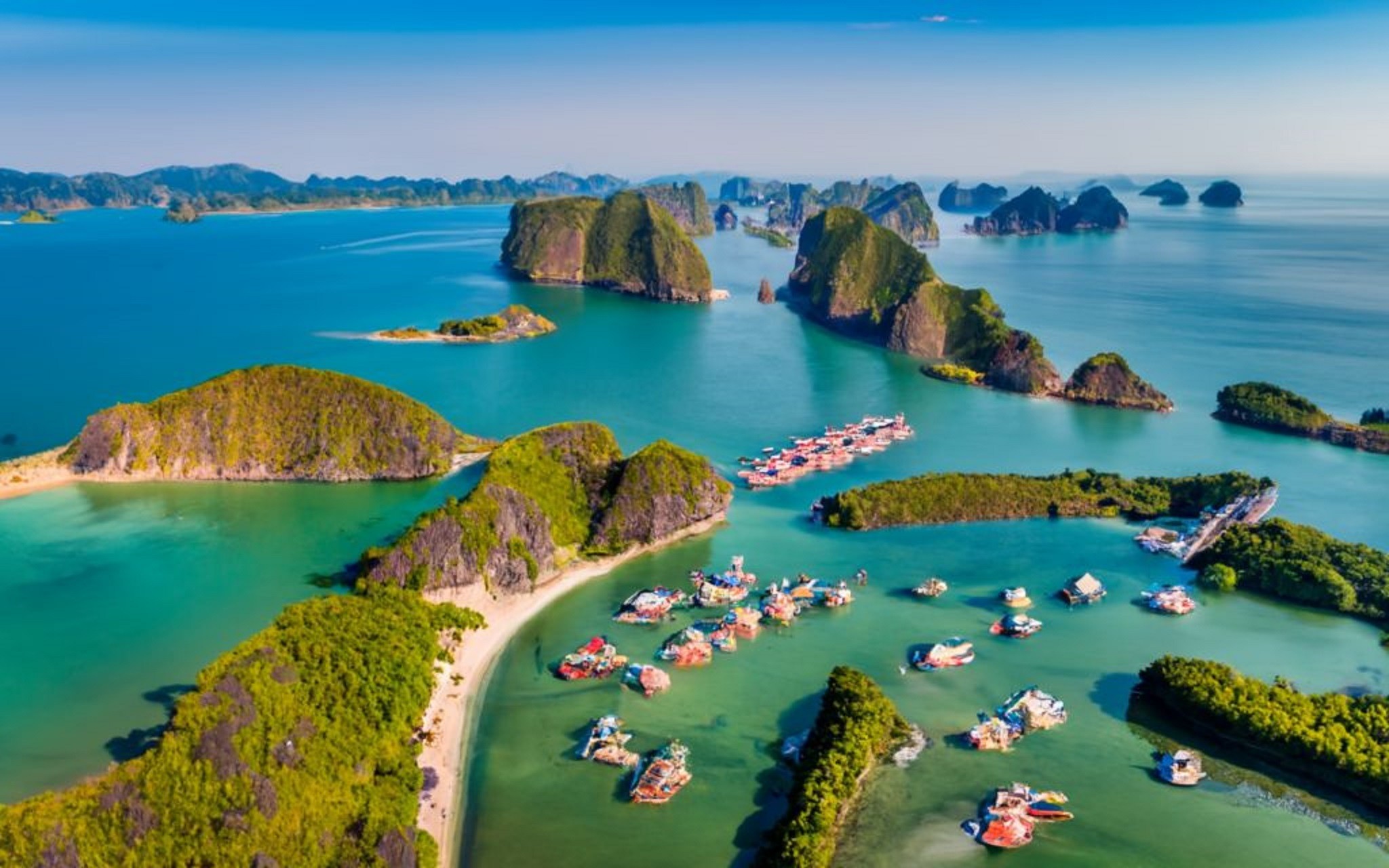
Best diving spots in Nha Trang
Nha Trang is Vietnam's most popular beach tourist destination and is also a diving hub.
There are more than 20 diving schools in Nha Trang offering courses and packages for experienced divers and beginners at very affordable prices.
Nha Trang is a great choice if you want to get your open water certification, as some of the cheapest PADI courses in the world can be done here.
Nha Trang's diving sites are not the best, but most divers come here to take courses or improve their diving skills.

[Best diving spot]
Moray Beach: Lots of snails and beautiful coral reefs. You can see various types of fish such as scorpion fish, clown fish, and black frog fish. Average underwater depth: 18 meters.
Madonna Rock: This is an underwater cave of varying depths with a variety of fish species. Watch out for the giant scorpion fish. Average underwater depth: 10 ~ 25 meters.
[Best diving period]
The best season is February to September, which offers the best views and warmest water temperatures. If you dive outside of the season, visibility can be very poor.
Best diving spots in Phu Quoc
Con Dao is one of two marine national parks in Vietnam and is an archipelago of 16 islands.
Con Dao is famous for having some of the most beautiful coral reefs in Vietnam.
The area is home to over 1,300 different species of marine life.
The endangered dugong (sea cow) lives here along with turtles and dolphins.
With over 20 dive sites mentioned, this is a great place for divers of all levels.
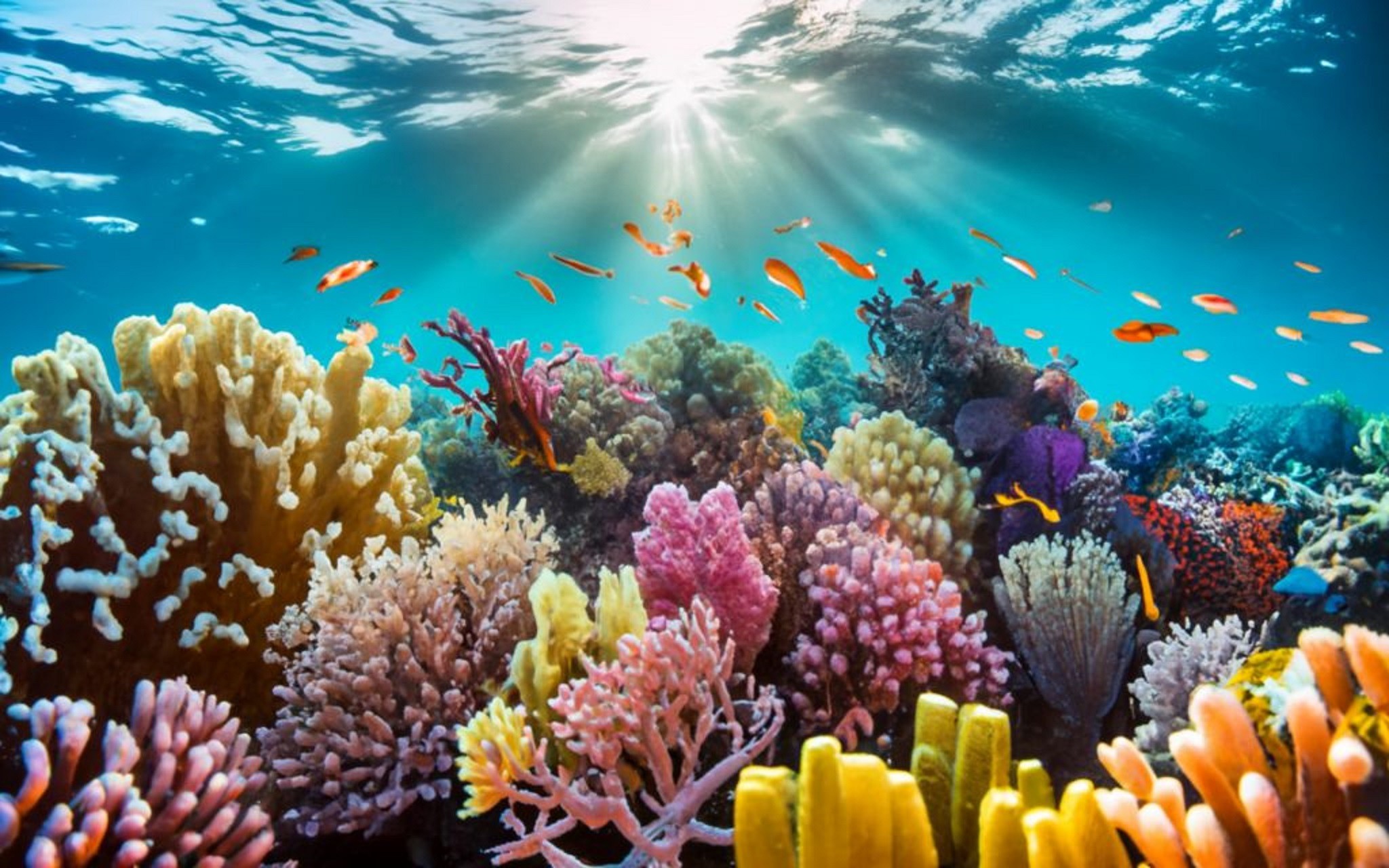
[Best diving spot]
Fish Highway: A place to see wrecked fishing boats that are now home to sponges, corals, moray eels, stonefish, and scorpion fish. Average water depth: 20 to 28 meters
Hun Trung: The current is fast and if you are lucky you can see dolphins and sharks. It is beautifully covered with soft coral and a variety of fish including tuna, mackerel, and barracuda. Average water depth: 15 to 20 meters.
White Rock: A place where experienced divers can dive in perfect conditions. You can see fantastic soft corals, colorful snails and countless tropical fish.
[Best diving Period]
The peak season for diving in Con Dao is from March to September. July, August and September are the rainy season in Con Dao, making diving difficult. The off-season for diving is from November to February due to high wind speeds.
Best diving spots in Phu Quoc
Phu Quoc is the largest island in Vietnam and is surrounded by 21 small islands, all of which are fantastic marine tourist destinations with white sand beaches and palm trees.
Diving in Phu Quoc is becoming an increasingly popular sporting activity for both beginners and experienced divers.
Most dive sites are very shallow, so beginners can enjoy snorkeling as well. However, visibility is not always good and it is difficult to see large fish.
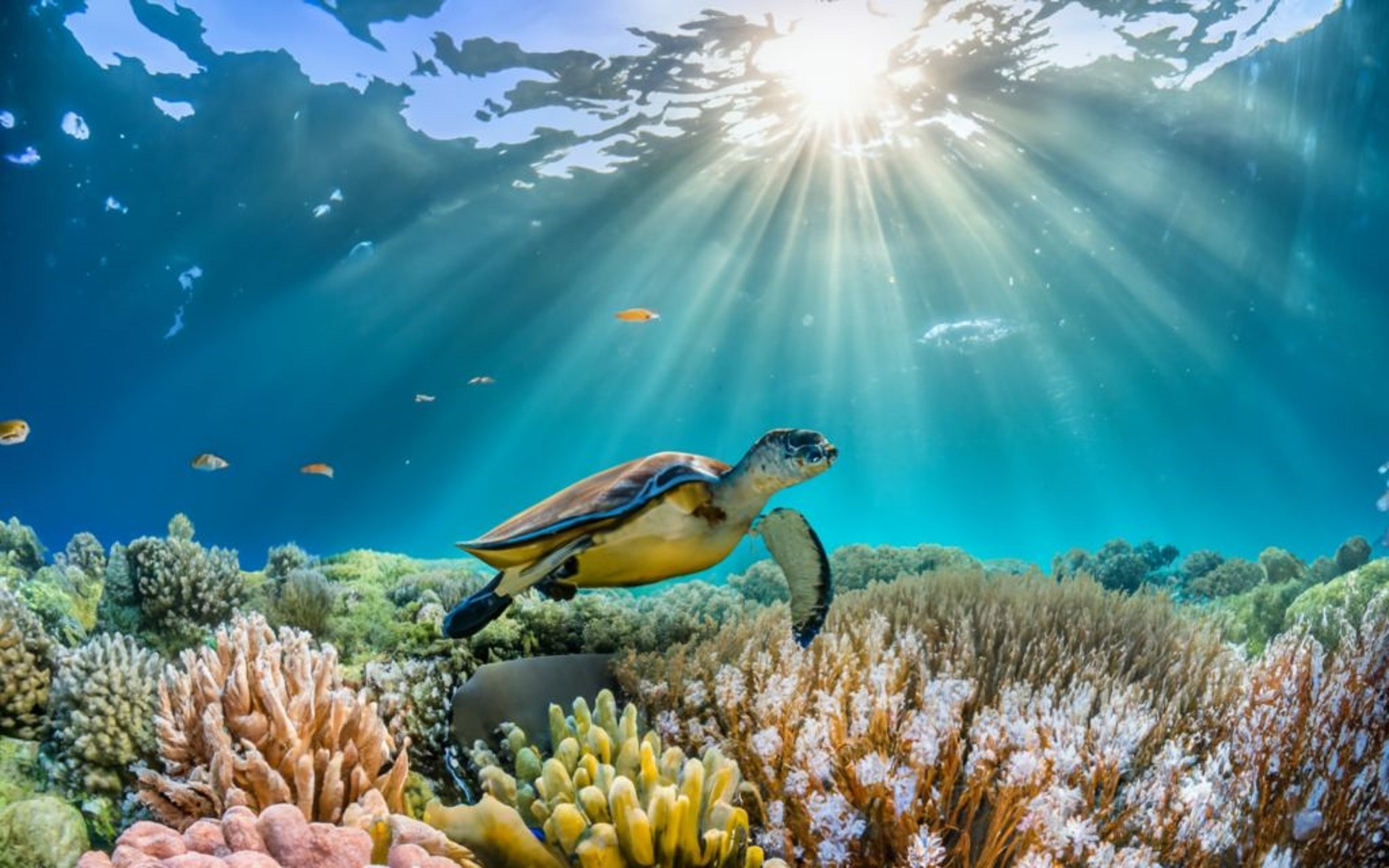
[Best diving spot]
Honko (Dry Island): A diving site with rocks sticking out of the water, including stingrays, bamboo sharks, snails, catfish, and scorpions.
Nudbranch Gardens: You can see snails and other small marine life hiding under the rocks, and if the season is right, you can even see bamboo sharks. Average depth: 7 to 12 meters.
[Best diving Period]
The ideal season for diving in Phu Quoc is the dry season between October and April. This is because the seas are calmer and underwater visibility is best. Water temperatures range from 28C to 31C all year round.
Best diving spots in Hoi An
All diving in Hoi An takes place around Cham Island in Cu Lao Cham Marine Park.
It is a cluster of eight islands located 15km off the coast. Here you can see various types of coral and rocks, as well as tropical fish. The coral reef is very shallow, making it a great place for snorkeling.
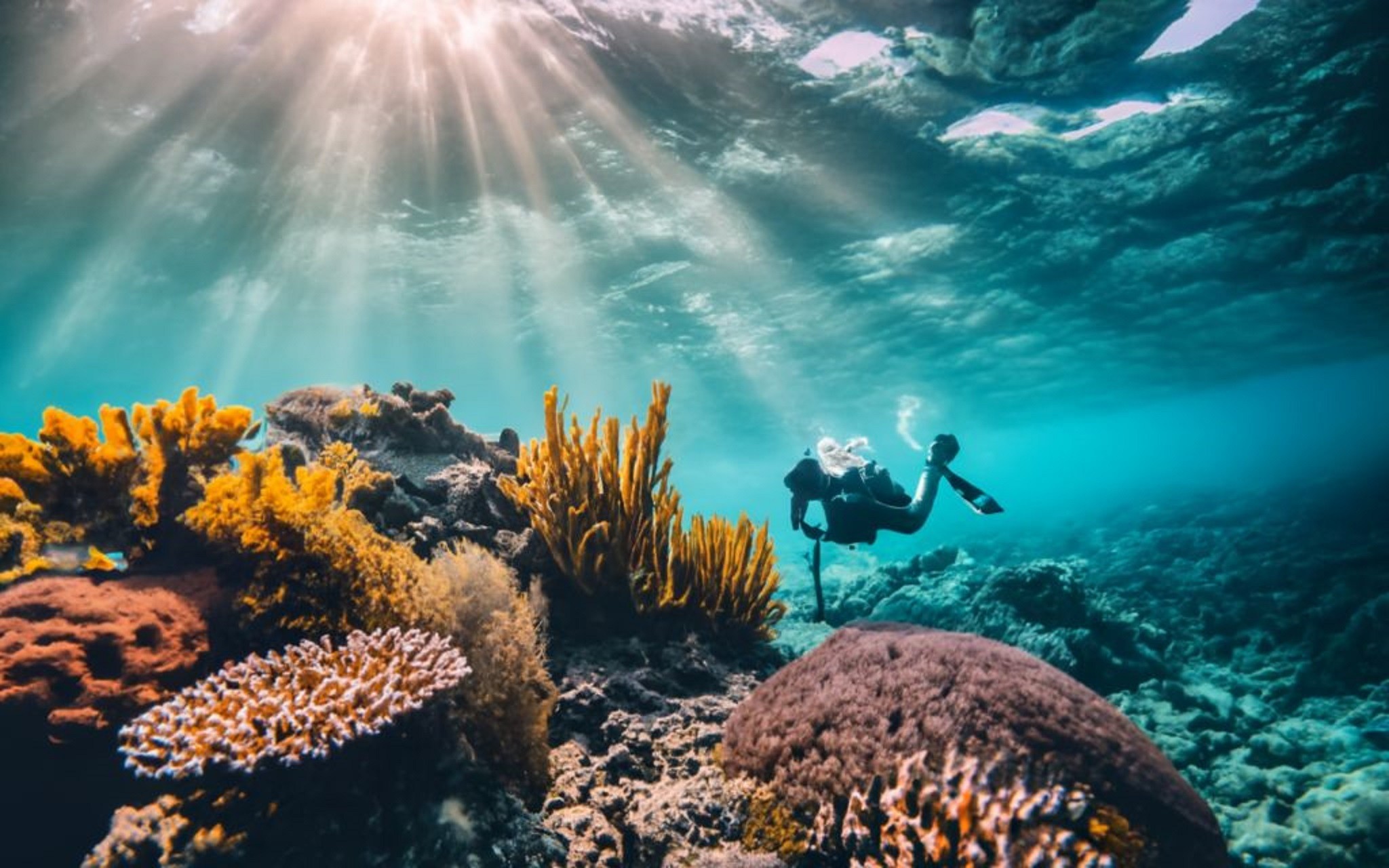
[Best diving spot]
Hon Nhan (Cham Island): A big place to see a variety of fish and snails. Average depth: 15 to 35 meters.
Honmo (Cham Island): A beautiful place with beautiful hard and soft corals, sea needles, sea anemones, seahorses, and snails. Average depth: 5 to 30 meters.
[Best diving Period]
The best time to dive in Hoi An is from April to October, when the water is warm, calm and the underwater scenery is clear. You can dive outside of this season, but you'll likely be disappointed.
Best diving spot Whale Island
Whale Island, about 80km from Nha Trang, is a fantastic location for top diving at all levels.
Diving sites with caves and beautiful reefs await divers.
Whale Island has been a popular diving destination since leading French ocean explorer Jacques Cousteau visited the area decades ago to work as a marine cartographer.
Occasionally, if you are lucky, you may encounter whale sharks, whales, manta rays and turtles.
There are enough dive sites to keep you busy for at least a week just diving.
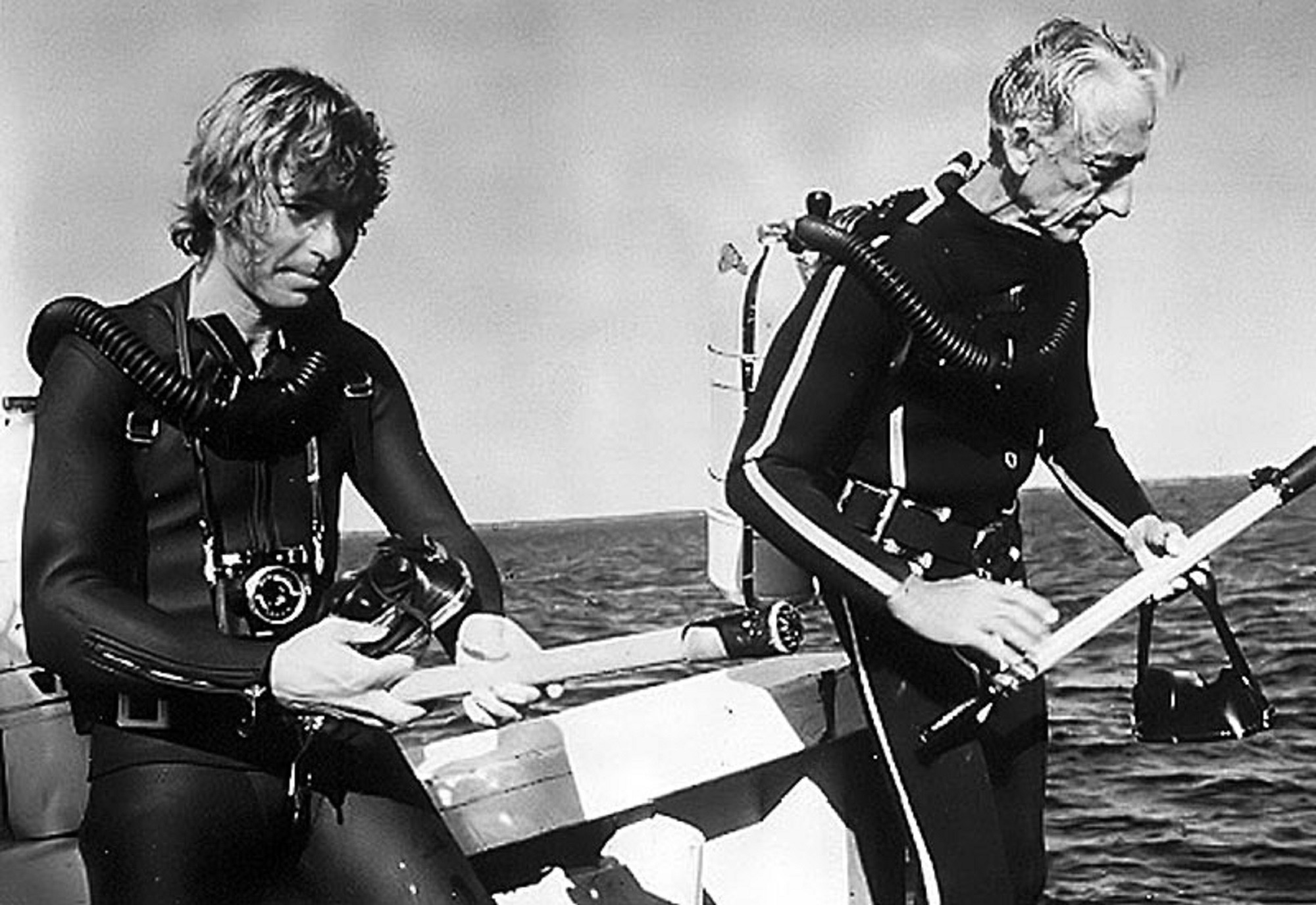
[Best diving spot]
Hon Trau Nam: A place with a high probability of seeing stingrays. Manta ray, eagle ray, sting ray. The deep depths of this site are also home to beautiful soft corals and sea snails. Average depth: 20 to 35 meters.
Whale Island Bay: A great place to see clownfish and anemones. The large rocks are also home to horse mackerel, grouper, and sea bream. Average depth: 15 meters.
Bai Su: A fantastic location for night diving with a variety of caves at just 15 meters deep. Lots of snails, Spanish dancers, tropical fish and clams.
[Best diving Period]
As with diving in Nha Trang, the best season for diving in Whale Island is from February to September, when visibility is good and water temperatures are most comfortable.
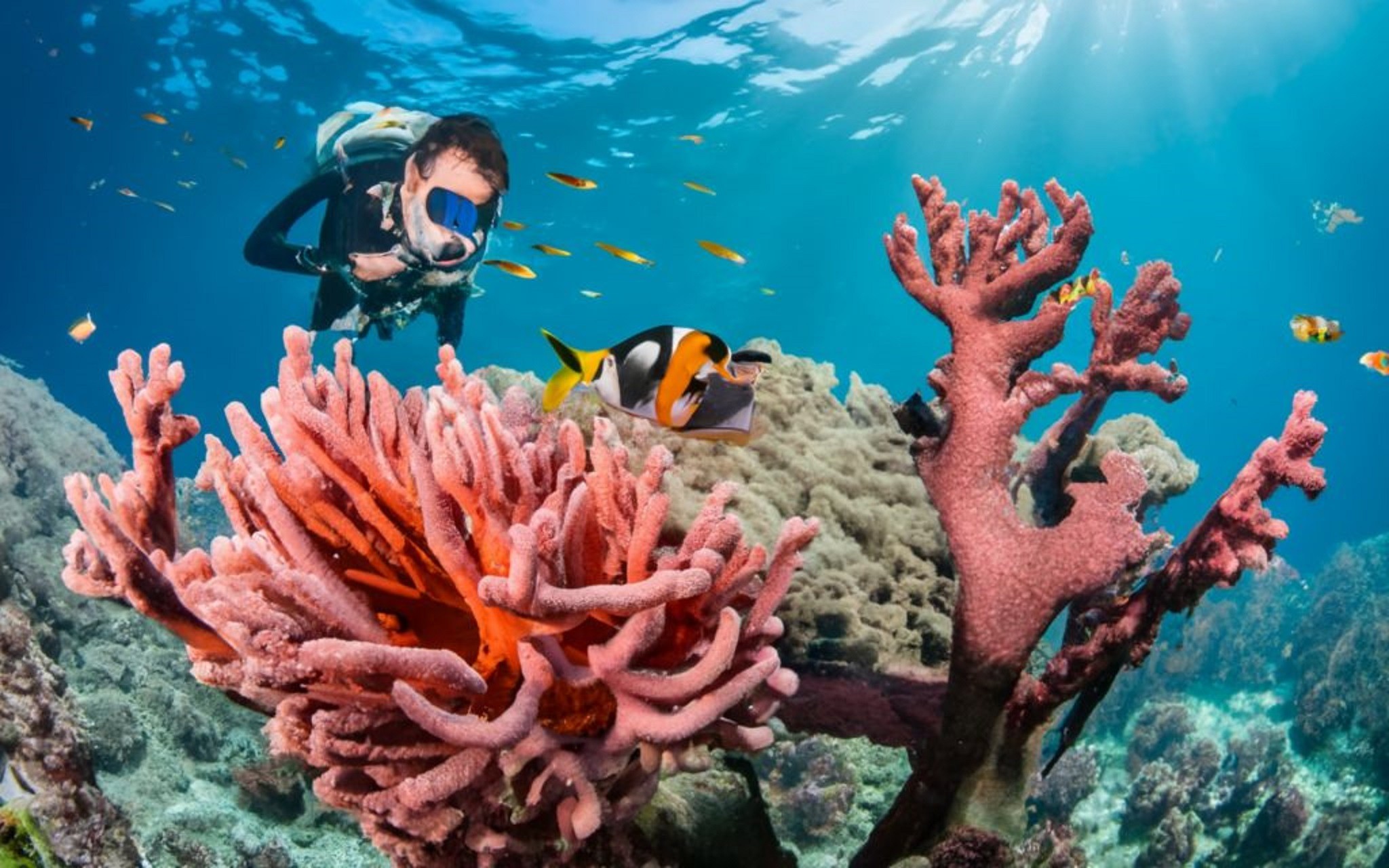
Table of contents
5 Best Diving Sites in Vietnam
Culture
6 minutes
Mar 7, 2024

What many people don't know is that with a huge coastline longer than Thailand's at 3260km, Vietnam is an underwater paradise for diving enthusiasts and non-divers alike!
If you are already familiar with the beauty of Vietnam's diving sites, why not look beneath the waves and discover the underwater world? For the most part, Vietnam is not famous as a diving destination, but this adds an element of adventure to divers looking to explore something new.

Best diving spots in Nha Trang
Nha Trang is Vietnam's most popular beach tourist destination and is also a diving hub.
There are more than 20 diving schools in Nha Trang offering courses and packages for experienced divers and beginners at very affordable prices.
Nha Trang is a great choice if you want to get your open water certification, as some of the cheapest PADI courses in the world can be done here.
Nha Trang's diving sites are not the best, but most divers come here to take courses or improve their diving skills.

[Best diving spot]
Moray Beach: Lots of snails and beautiful coral reefs. You can see various types of fish such as scorpion fish, clown fish, and black frog fish. Average underwater depth: 18 meters.
Madonna Rock: This is an underwater cave of varying depths with a variety of fish species. Watch out for the giant scorpion fish. Average underwater depth: 10 ~ 25 meters.
[Best diving period]
The best season is February to September, which offers the best views and warmest water temperatures. If you dive outside of the season, visibility can be very poor.
Best dive sites in Con Dao
Con Dao is one of two marine national parks in Vietnam and is an archipelago of 16 islands.
Con Dao is famous for having some of the most beautiful coral reefs in Vietnam.
The area is home to over 1,300 different species of marine life.
The endangered dugong (sea cow) lives here along with turtles and dolphins.
With over 20 dive sites mentioned, this is a great place for divers of all levels.

[Best diving spot]
Fish Highway: A place to see wrecked fishing boats that are now home to sponges, corals, moray eels, stonefish, and scorpion fish. Average water depth: 20 to 28 meters
Hun Trung: The current is fast and if you are lucky you can see dolphins and sharks. It is beautifully covered with soft coral and a variety of fish including tuna, mackerel, and barracuda. Average water depth: 15 to 20 meters.
White Rock: A place where experienced divers can dive in perfect conditions. You can see fantastic soft corals, colorful snails and countless tropical fish.
[Best diving Period]
The peak season for diving in Con Dao is from March to September. July, August and September are the rainy season in Con Dao, making diving difficult. The off-season for diving is from November to February due to high wind speeds.
Best diving spots in Phu Quoc
Phu Quoc is the largest island in Vietnam and is surrounded by 21 small islands, all of which are fantastic marine tourist destinations with white sand beaches and palm trees.
Diving in Phu Quoc is becoming an increasingly popular sporting activity for both beginners and experienced divers.
Most dive sites are very shallow, so beginners can enjoy snorkeling as well. However, visibility is not always good and it is difficult to see large fish.

[Best diving spot]
Honko (Dry Island): A diving site with rocks sticking out of the water, including stingrays, bamboo sharks, snails, catfish, and scorpions.
Nudbranch Gardens: You can see snails and other small marine life hiding under the rocks, and if the season is right, you can even see bamboo sharks. Average depth: 7 to 12 meters.
[Best diving Period]
The ideal season for diving in Phu Quoc is the dry season between October and April. This is because the seas are calmer and underwater visibility is best. Water temperatures range from 28C to 31C all year round.
Best diving spots in Hoi An
All diving in Hoi An takes place around Cham Island in Cu Lao Cham Marine Park.
It is a cluster of eight islands located 15km off the coast. Here you can see various types of coral and rocks, as well as tropical fish. The coral reef is very shallow, making it a great place for snorkeling.

[Best diving spot]
Hon Nhan (Cham Island): A big place to see a variety of fish and snails. Average depth: 15 to 35 meters.
Honmo (Cham Island): A beautiful place with beautiful hard and soft corals, sea needles, sea anemones, seahorses, and snails. Average depth: 5 to 30 meters.
[Best diving Period]
The best time to dive in Hoi An is from April to October, when the water is warm, calm and the underwater scenery is clear. You can dive outside of this season, but you'll likely be disappointed.
Best diving spot Whale Island
Whale Island, about 80km from Nha Trang, is a fantastic location for top diving at all levels.
Diving sites with caves and beautiful reefs await divers.
Whale Island has been a popular diving destination since leading French ocean explorer Jacques Cousteau visited the area decades ago to work as a marine cartographer.
Occasionally, if you are lucky, you may encounter whale sharks, whales, manta rays and turtles.
There are enough dive sites to keep you busy for at least a week just diving.

[Best diving spot]
Hon Trau Nam: A place with a high probability of seeing stingrays. Manta ray, eagle ray, sting ray. The deep depths of this site are also home to beautiful soft corals and sea snails. Average depth: 20 to 35 meters.
Whale Island Bay: A great place to see clownfish and anemones. The large rocks are also home to horse mackerel, grouper, and sea bream. Average depth: 15 meters.
Bai Su: A fantastic location for night diving with a variety of caves at just 15 meters deep. Lots of snails, Spanish dancers, tropical fish and clams.
[Best diving Period]
As with diving in Nha Trang, the best season for diving in Whale Island is from February to September, when visibility is good and water temperatures are most comfortable.

Table of contents
Table of contents
5 Best Diving Sites in Vietnam
Culture
6 minutes
Mar 7, 2024

What many people don't know is that with a huge coastline longer than Thailand's at 3260km, Vietnam is an underwater paradise for diving enthusiasts and non-divers alike!
If you are already familiar with the beauty of Vietnam's diving sites, why not look beneath the waves and discover the underwater world? For the most part, Vietnam is not famous as a diving destination, but this adds an element of adventure to divers looking to explore something new.

Best diving spots in Nha Trang
Nha Trang is Vietnam's most popular beach tourist destination and is also a diving hub.
There are more than 20 diving schools in Nha Trang offering courses and packages for experienced divers and beginners at very affordable prices.
Nha Trang is a great choice if you want to get your open water certification, as some of the cheapest PADI courses in the world can be done here.
Nha Trang's diving sites are not the best, but most divers come here to take courses or improve their diving skills.

[Best diving spot]
Moray Beach: Lots of snails and beautiful coral reefs. You can see various types of fish such as scorpion fish, clown fish, and black frog fish. Average underwater depth: 18 meters.
Madonna Rock: This is an underwater cave of varying depths with a variety of fish species. Watch out for the giant scorpion fish. Average underwater depth: 10 ~ 25 meters.
[Best diving period]
The best season is February to September, which offers the best views and warmest water temperatures. If you dive outside of the season, visibility can be very poor.
Best dive sites in Con Dao
Con Dao is one of two marine national parks in Vietnam and is an archipelago of 16 islands.
Con Dao is famous for having some of the most beautiful coral reefs in Vietnam.
The area is home to over 1,300 different species of marine life.
The endangered dugong (sea cow) lives here along with turtles and dolphins.
With over 20 dive sites mentioned, this is a great place for divers of all levels.

[Best diving spot]
Fish Highway: A place to see wrecked fishing boats that are now home to sponges, corals, moray eels, stonefish, and scorpion fish. Average water depth: 20 to 28 meters
Hun Trung: The current is fast and if you are lucky you can see dolphins and sharks. It is beautifully covered with soft coral and a variety of fish including tuna, mackerel, and barracuda. Average water depth: 15 to 20 meters.
White Rock: A place where experienced divers can dive in perfect conditions. You can see fantastic soft corals, colorful snails and countless tropical fish.
[Best diving Period]
The peak season for diving in Con Dao is from March to September. July, August and September are the rainy season in Con Dao, making diving difficult. The off-season for diving is from November to February due to high wind speeds.
Best diving spots in Phu Quoc
Phu Quoc is the largest island in Vietnam and is surrounded by 21 small islands, all of which are fantastic marine tourist destinations with white sand beaches and palm trees.
Diving in Phu Quoc is becoming an increasingly popular sporting activity for both beginners and experienced divers.
Most dive sites are very shallow, so beginners can enjoy snorkeling as well. However, visibility is not always good and it is difficult to see large fish.

[Best diving spot]
Honko (Dry Island): A diving site with rocks sticking out of the water, including stingrays, bamboo sharks, snails, catfish, and scorpions.
Nudbranch Gardens: You can see snails and other small marine life hiding under the rocks, and if the season is right, you can even see bamboo sharks. Average depth: 7 to 12 meters.
[Best diving Period]
The ideal season for diving in Phu Quoc is the dry season between October and April. This is because the seas are calmer and underwater visibility is best. Water temperatures range from 28C to 31C all year round.
Best diving spots in Hoi An
All diving in Hoi An takes place around Cham Island in Cu Lao Cham Marine Park.
It is a cluster of eight islands located 15km off the coast. Here you can see various types of coral and rocks, as well as tropical fish. The coral reef is very shallow, making it a great place for snorkeling.

[Best diving spot]
Hon Nhan (Cham Island): A big place to see a variety of fish and snails. Average depth: 15 to 35 meters.
Honmo (Cham Island): A beautiful place with beautiful hard and soft corals, sea needles, sea anemones, seahorses, and snails. Average depth: 5 to 30 meters.
[Best diving Period]
The best time to dive in Hoi An is from April to October, when the water is warm, calm and the underwater scenery is clear. You can dive outside of this season, but you'll likely be disappointed.
Best diving spot Whale Island
Whale Island, about 80km from Nha Trang, is a fantastic location for top diving at all levels.
Diving sites with caves and beautiful reefs await divers.
Whale Island has been a popular diving destination since leading French ocean explorer Jacques Cousteau visited the area decades ago to work as a marine cartographer.
Occasionally, if you are lucky, you may encounter whale sharks, whales, manta rays and turtles.
There are enough dive sites to keep you busy for at least a week just diving.

[Best diving spot]
Hon Trau Nam: A place with a high probability of seeing stingrays. Manta ray, eagle ray, sting ray. The deep depths of this site are also home to beautiful soft corals and sea snails. Average depth: 20 to 35 meters.
Whale Island Bay: A great place to see clownfish and anemones. The large rocks are also home to horse mackerel, grouper, and sea bream. Average depth: 15 meters.
Bai Su: A fantastic location for night diving with a variety of caves at just 15 meters deep. Lots of snails, Spanish dancers, tropical fish and clams.
[Best diving Period]
As with diving in Nha Trang, the best season for diving in Whale Island is from February to September, when visibility is good and water temperatures are most comfortable.

Table of contents
5 Best Diving Sites in Vietnam
Culture
6 minutes
Mar 7, 2024

What many people don't know is that with a huge coastline longer than Thailand's at 3260km, Vietnam is an underwater paradise for diving enthusiasts and non-divers alike!
If you are already familiar with the beauty of Vietnam's diving sites, why not look beneath the waves and discover the underwater world? For the most part, Vietnam is not famous as a diving destination, but this adds an element of adventure to divers looking to explore something new.

Best diving spots in Nha Trang
Nha Trang is Vietnam's most popular beach tourist destination and is also a diving hub.
There are more than 20 diving schools in Nha Trang offering courses and packages for experienced divers and beginners at very affordable prices.
Nha Trang is a great choice if you want to get your open water certification, as some of the cheapest PADI courses in the world can be done here.
Nha Trang's diving sites are not the best, but most divers come here to take courses or improve their diving skills.

[Best diving spot]
Moray Beach: Lots of snails and beautiful coral reefs. You can see various types of fish such as scorpion fish, clown fish, and black frog fish. Average underwater depth: 18 meters.
Madonna Rock: This is an underwater cave of varying depths with a variety of fish species. Watch out for the giant scorpion fish. Average underwater depth: 10 ~ 25 meters.
[Best diving period]
The best season is February to September, which offers the best views and warmest water temperatures. If you dive outside of the season, visibility can be very poor.
Best dive sites in Con Dao
Con Dao is one of two marine national parks in Vietnam and is an archipelago of 16 islands.
Con Dao is famous for having some of the most beautiful coral reefs in Vietnam.
The area is home to over 1,300 different species of marine life.
The endangered dugong (sea cow) lives here along with turtles and dolphins.
With over 20 dive sites mentioned, this is a great place for divers of all levels.

[Best diving spot]
Fish Highway: A place to see wrecked fishing boats that are now home to sponges, corals, moray eels, stonefish, and scorpion fish. Average water depth: 20 to 28 meters
Hun Trung: The current is fast and if you are lucky you can see dolphins and sharks. It is beautifully covered with soft coral and a variety of fish including tuna, mackerel, and barracuda. Average water depth: 15 to 20 meters.
White Rock: A place where experienced divers can dive in perfect conditions. You can see fantastic soft corals, colorful snails and countless tropical fish.
[Best diving Period]
The peak season for diving in Con Dao is from March to September. July, August and September are the rainy season in Con Dao, making diving difficult. The off-season for diving is from November to February due to high wind speeds.
Best diving spots in Phu Quoc
Phu Quoc is the largest island in Vietnam and is surrounded by 21 small islands, all of which are fantastic marine tourist destinations with white sand beaches and palm trees.
Diving in Phu Quoc is becoming an increasingly popular sporting activity for both beginners and experienced divers.
Most dive sites are very shallow, so beginners can enjoy snorkeling as well. However, visibility is not always good and it is difficult to see large fish.

[Best diving spot]
Honko (Dry Island): A diving site with rocks sticking out of the water, including stingrays, bamboo sharks, snails, catfish, and scorpions.
Nudbranch Gardens: You can see snails and other small marine life hiding under the rocks, and if the season is right, you can even see bamboo sharks. Average depth: 7 to 12 meters.
[Best diving Period]
The ideal season for diving in Phu Quoc is the dry season between October and April. This is because the seas are calmer and underwater visibility is best. Water temperatures range from 28C to 31C all year round.
Best diving spots in Hoi An
All diving in Hoi An takes place around Cham Island in Cu Lao Cham Marine Park.
It is a cluster of eight islands located 15km off the coast. Here you can see various types of coral and rocks, as well as tropical fish. The coral reef is very shallow, making it a great place for snorkeling.

[Best diving spot]
Hon Nhan (Cham Island): A big place to see a variety of fish and snails. Average depth: 15 to 35 meters.
Honmo (Cham Island): A beautiful place with beautiful hard and soft corals, sea needles, sea anemones, seahorses, and snails. Average depth: 5 to 30 meters.
[Best diving Period]
The best time to dive in Hoi An is from April to October, when the water is warm, calm and the underwater scenery is clear. You can dive outside of this season, but you'll likely be disappointed.
Best diving spot Whale Island
Whale Island, about 80km from Nha Trang, is a fantastic location for top diving at all levels.
Diving sites with caves and beautiful reefs await divers.
Whale Island has been a popular diving destination since leading French ocean explorer Jacques Cousteau visited the area decades ago to work as a marine cartographer.
Occasionally, if you are lucky, you may encounter whale sharks, whales, manta rays and turtles.
There are enough dive sites to keep you busy for at least a week just diving.

[Best diving spot]
Hon Trau Nam: A place with a high probability of seeing stingrays. Manta ray, eagle ray, sting ray. The deep depths of this site are also home to beautiful soft corals and sea snails. Average depth: 20 to 35 meters.
Whale Island Bay: A great place to see clownfish and anemones. The large rocks are also home to horse mackerel, grouper, and sea bream. Average depth: 15 meters.
Bai Su: A fantastic location for night diving with a variety of caves at just 15 meters deep. Lots of snails, Spanish dancers, tropical fish and clams.
[Best diving Period]
As with diving in Nha Trang, the best season for diving in Whale Island is from February to September, when visibility is good and water temperatures are most comfortable.

Table of contents
Vietnam Insider.
Welcome to our Connect with Us page! We're thrilled to have you here and excited to connect with fellow Vietnam travel enthusiasts. Whether you have questions, suggestions, or simply want to share your own Vietnam travel experiences, we're all ears! Feel free to reach out to us through the contact form below or connect with us on our social media channels. Let's embark on this incredible journey together and explore the wonders of Vietnam!
Trending
Newsletter
Subscribe to our newsletter for a curated dose of design inspiration, practical tips, and exclusive content delivered straight to your inbox.
© 2024 Vietnam Insider.
vietnaminsidertips@gmail.com
Vietnam Insider.
Welcome to our Connect with Us page! We're thrilled to have you here and excited to connect with fellow Vietnam travel enthusiasts. Whether you have questions, suggestions, or simply want to share your own Vietnam travel experiences, we're all ears! Feel free to reach out to us through the contact form below or connect with us on our social media channels. Let's embark on this incredible journey together and explore the wonders of Vietnam!
Trending
Newsletter
Subscribe to our newsletter for a curated dose of design inspiration, practical tips, and exclusive content delivered straight to your inbox.
© 2024 Vietnam Insider.
vietnaminsidertips@gmail.com
Vietnam Insider.
Welcome to our Connect with Us page! We're thrilled to have you here and excited to connect with fellow Vietnam travel enthusiasts. Whether you have questions, suggestions, or simply want to share your own Vietnam travel experiences, we're all ears! Feel free to reach out to us through the contact form below or connect with us on our social media channels. Let's embark on this incredible journey together and explore the wonders of Vietnam!
Trending
Newsletter
Subscribe to our newsletter for a curated dose of design inspiration, practical tips, and exclusive content delivered straight to your inbox.
© 2024 Vietnam Insider.
vietnaminsidertips@gmail.com
